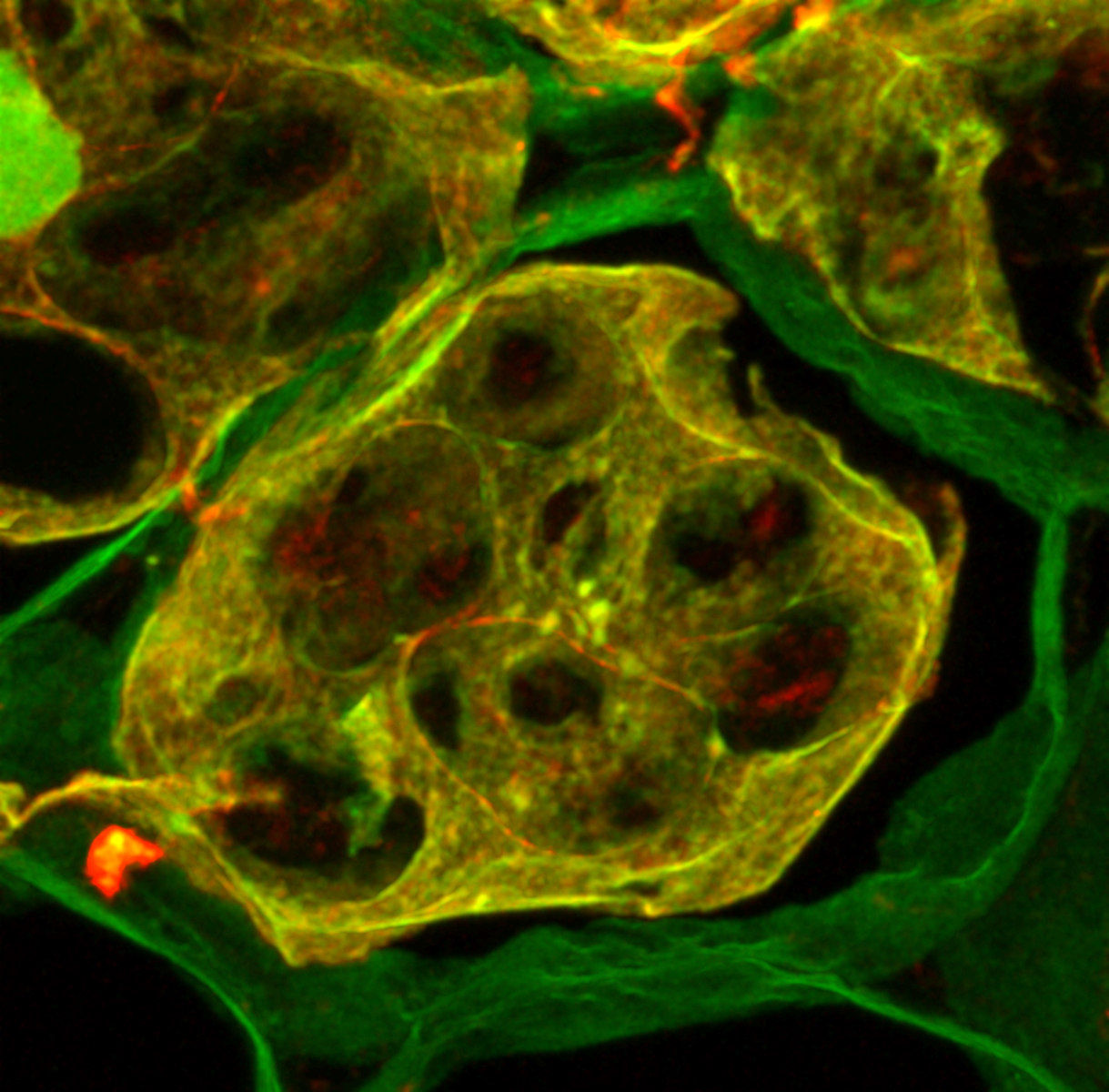Finding of amyloids in plants could help create varieties with more nutritious and hypoallergenic seeds

A research team, which included scientists from St Petersburg University, has shown for the first time that special amyloid fibrils are found in plants. These fibrils are responsible for the ‘conservation’ of nutrients in plant seeds. Thanks to this work, as the journal Trends in Plant Science recently noted, it is now known that functional amyloids serve biological functions in representatives of almost all large groups of living organisms: bacteria, archaea, animals, fungi, and plants.
The research was supported by a grant from the Russian Science Foundation (project No 17-16-01100).
1 This fundamental finding could help improve the nutritional value of plant seeds and even reduce allergenicity of legume seeds in the future. On the packaging of more than a half of snacks and sweets, which may not contain nuts at all, a warning phrase is often found: ‘It may contain traces of peanuts.’ Some people are so allergic to this product that the smallest particles of the peanut or even its powder causes an unpleasant and sometimes dangerous reaction: from a simple rash to severe swelling. Peanut seeds contain many proteins, some of which can cause allergies. One of the most potent allergens is vicilin, which is found in various legumes, including peanuts and peas.The study was conducted by the team of researchers from: St Petersburg University; the All-Russian Research Institute for Agricultural Microbiology; the Institute of Cytology of the Russian Academy of Sciences; the Institute of Theoretical and Experimental Biophysics of the Russian Academy of Sciences; Kazan Federal University; and the University of Burgundy (France). The research findings are published in the journal PLOS Biology. The scientists managed to show by experiments for the first time (previously they managed to predict this using bioinformatic algorithms) that the seeds of garden pea contain amyloid-like aggregates of storage proteins – amyloid fibrils. They were previously found in bacteria, archaea, animals and fungi, but were first found in plants. Interestingly, most of the amyloids in pea seeds are formed by the aforementioned protein vicilin.
‘Vicilin is one of the most important food allergens found in legumes. The mechanism of its allergenicity can potentially be associated with the amyloid properties of this protein that we have discovered. We have shown that storage proteins, which are the main reservoir of nutrients for the embryo, accumulate in seeds as amyloids. In the future, studying these mechanisms could help create less allergenic varieties of peas, peanuts, and other legumes,’ said Anton Nizhnikov, the corresponding author of the research, Associate Professor at the Department of Genetics and Biotechnology at St Petersburg University, Laboratory Head at the All-Russian Research Institute of Agricultural Microbiology
‘Interestingly, according to our bioinformatic data, the storage proteins of seeds not only of peas, but of a number of plants that do not belong to legumes, turned out to be abundant in sites that are prone to the formation of amyloids, that is, compact and stable fibrillar aggregates. This explains the ability of seeds to survive various unfavourable conditions and germinate after many years,’ noted Kirill Antonets, the first author of the research, Associate Professor at the Department of Cytology and Histology at St Petersburg University, Senior Research Associate at the All-Russian Research Institute of Agricultural Microbiology.
Another possible applied value of this work is the creation of plant cultures with super nourishing seeds in the future. The in vitro experiments performed by the scientists have shown that mammals cannot completely digest plant amyloids: they cannot be broken down by digestive enzymes. As Anton Nizhnikov explains, amyloids significantly impair the nutritional value of seeds. It is therefore important to understand how the formation of amyloids in plant seeds can be reduced in order to obtain varieties with a larger amount of common proteins. Such crops can become particularly useful and nutritious for humans. ‘Today we are also studying the amyloids of root nodule bacteria. These are the microorganisms that can enter into symbiosis with legumes and bind atmospheric nitrogen so that plants can receive more nutrients,’ said Anton Nizhnikov. ‘There is an assumption that amyloids can also play an important role in a mutually beneficial symbiotic process. At least root nodule bacteria, as we have shown, also have amyloids. We hope that our findings will be of benefit to the development of plant biology and microbiology, as well as for agriculture.’
For reference: a special fibrillar aggregate of proteins – amyloids – has become known for its association with a number of diseases caused by abnormal protein aggregation, known as amyloidosis. In these severe diseases, monomeric soluble proteins are converted into polymeric fibrillar deposits that form amyloid ‘plaques’ in various tissues and organs. In total, there are more than 40 human diseases associated with amyloids, and they are very difficult to treat or are completely incurable.
However, as this research also confirms, in recent decades, scientists around the world have been finding more and more evidence that amyloids function in healthy organisms. This form of protein makes it possible to ‘conserve’ and stabilise various substances. Moreover, it acts as a kind of structural ‘template’. This happens not only in plants. For example, in humans and animals, some of the hormones are stored precisely in the form of amyloids, while other functional amyloids are involved in melanin biosynthesis and the formation of long-term memory.
The research was supported by a grant from the Russian Science Foundation (project No ). The experimental part of the work was carried out using the equipment of the St Petersburg University Research Park.

